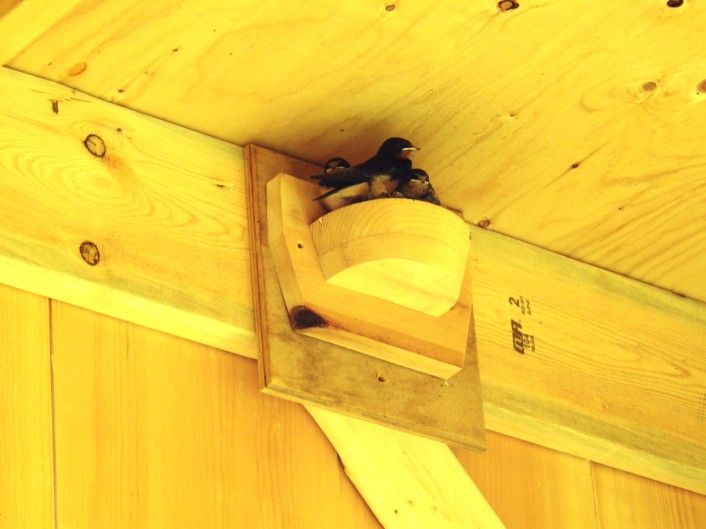Ask any farmer, and they’ll tell you there are not nearly so many Barn Swallows as there used to be. The science backs them up – over the past 20 years, there has been a steep drop in swallow populations across eastern North America. In Ontario, Barn Swallows are now listed as a threatened species.
Just why this is happening is a bit of a mystery. Certainly there are fewer of the old-style livestock barns now, reducing one of the favourite nesting sites for this species. But there also appears to be significantly fewer flying insects that provide food for swallows. Just take the “windshield test” – when I was a young driver, a summer evening drive coated the windshield with hundreds of insect carcasses; now it is seldom more than a light smattering.
We can’t do much about insect populations, at least in the short term. But we can make sure that Barn Swallows have access to safe places to nest. So this spring we constructed a special little “barn” designed just for the swallows on the Couchiching Conservancy’s Bluebird Ranch.
Our first decision was where to locate our structure. Bluebird Ranch has a large area of restored pasture land, and we know that pastures are richer in insect life than other crops. Even better, it has a couple of old ponds and a nearby watering trough that means regular cattle traffic. Cattle produce manure, and manure attracts flies, and swallows eat flies, among other things. So a location on a little knoll beside one of the ponds seemed ideal.
The structure itself is pretty simple – four posts supporting a flat ceiling with a sloping steel roof above that to shed the snow. What makes our swallow barn different from others we researched is a curtain wall of barnboards that extends downwards from the ceiling about four feet on all sides. This creates a sheltered shady interior, much like the stables where Barn Swallows traditionally nest.
Our other innovation was to place wooden nest cups on the side walls close to the ceiling. Barn Swallows use pellets of mud to construct their nests, and the nest cups provide an ideal base for that construction. Nest cups for Barn Swallows are a relatively new idea, arising from experiments by a researcher in Maryland. Now The Bird House in Orillia has become a Canadian supplier of its own brand of nest cups, and they generously donated some for our shelter.
Did our experiment work? In its first year, the swallow barn attracted one pair, which coated the inside of a nest cup with mud and produced three healthy young. So not a bad start, and we have high hopes that this use will grow in the years to come.
Even though they nest in built structures, Barn Swallows are essentially creatures of open grasslands. Birding on the Carden Alvar just wouldn’t be the same without their twittering calls as they swoop and skim above the pastures. With our help, we hope they will continue to be part of the landscape forever.
Written by Ron Reid.

